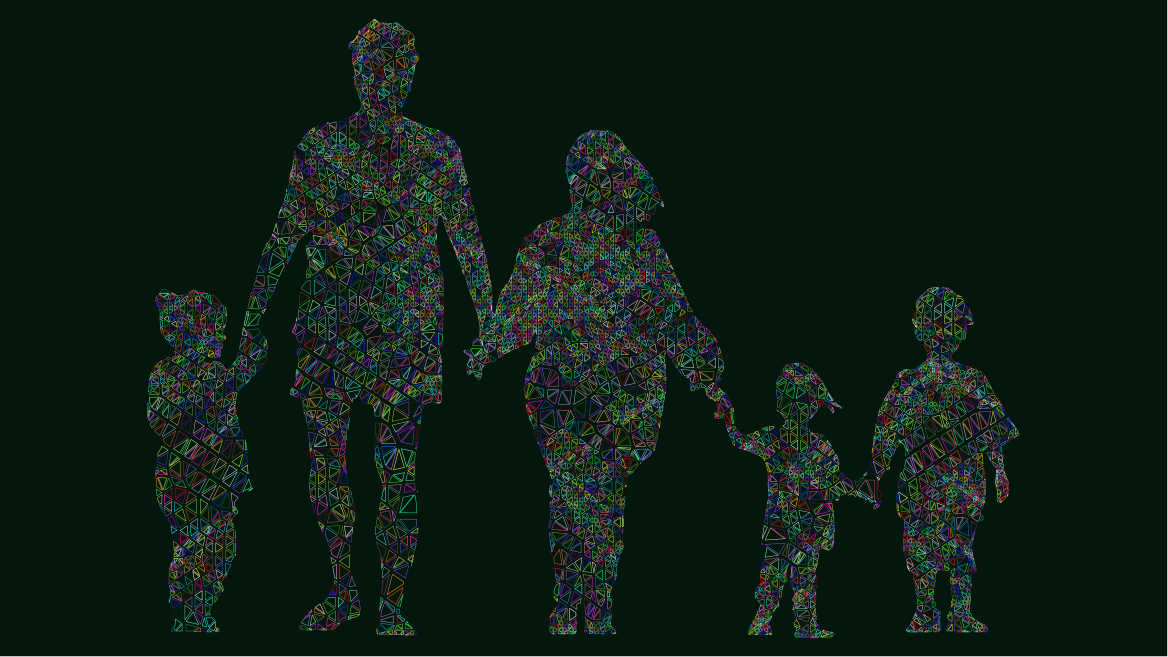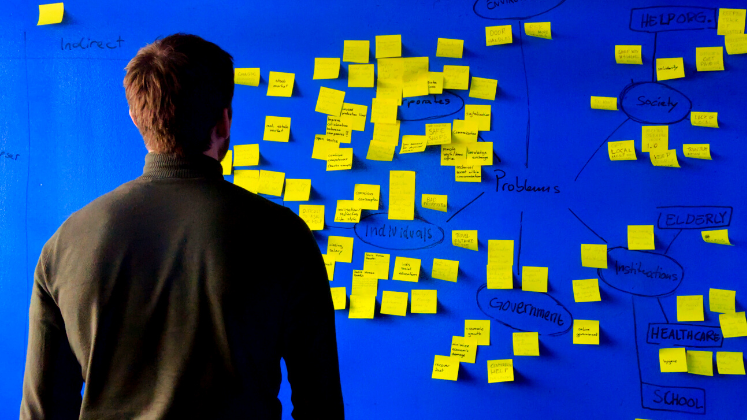How does change happen in communities that have been persistently marginalised? Drawing on work for his recent book focused on successful movements for social change, Sascha Haselmayer argues against short-term interventions and fixes and for a ‘slow lane’ process of building trust and capabilities at the local level.
Interested readers can watch a video or listen to a podcast of Sascha Haselmayer discussing the Slow Lane recently at LSE Cities.
In 2008, Rosanne Haggerty and her team at Community Solutions wondered if an approach that they had developed to provide high quality, affordable housing for the 416 residents of the Prince George Hotel could be applied to a long-neglected neighbourhood, Brownsville in Brooklyn, New York City. The Prince George had been a derelict hotel that Rosanne and her former organisation Common Ground had converted it into a beautiful residence integrating all support services to help people suffering homelessness, addiction or HIV rebuild their lives to outstanding success.

Could the model be adapted to the needs of a neighbourhood of 58,000 people? At the time, Brownsville had the highest infant mortality rate in New York City, the highest high school drop-out rate, the highest murder rate and was among the poorest neighbourhoods in the city. The New York City government and its public agencies seemed to have overlooked the neighbourhood for decades and was slow to act.
Rosanne’s vision was for Brownsville to become a stable neighbourhood, safe and supportive for people to build better lives. But where to start? Brownsville is different from the Prince George in important ways: Unlike a building with tenants, it is a neighbourhood, with no contracts or gates. And working with 58,000 people going about their daily lives is a different ballgame from working with 416 people, who live in supported housing. Brownsville is alive.
Seeding Empowerment
Community Solutions got the ball rolling by founding The Brownsville Partnership. They hired residents with deep connections in the community to become community organisers, and had them trained by Prof. Marshall Gantz, a world-class expert on community organizing at Harvard University. It was important to hire locally, to develop the skills and the muscle for the Brownsville Partnership to be led and run by the people of Brownsville. Community organising is more than a series of meetings. It is a process of listening, building trust, learning, ideation and holding partners accountable. Done well, the residents of Brownsville would become knowledgeable, empowered and be able to hold New York City agencies accountable.

Fig.2: Aerial view of Brownsville. Source: Brownsville Partnership
A critical milestone for the community was to have a plan for where they wanted to go. In 2017, nine years after the process started, they published the Brownsville Plan, and submitted it to the city. Community organising was new to Rosanne’s work. It took years, but it was a critical foundation to build on.
Reimagining Early Childhood
One of the priorities, highlighted by families in the plan, was to change what it was like to grow up in Brownsville, especially early childhood experience. People wanted a healthier, more supportive and safer environment for children and their families. Local people and services providers came together with experts to create United for Brownsville in 2018. Funded by Robin Hood, a non-profit that fights poverty, United for Brownsville is a partnership between Rosanne’s organization, Community Solutions, and SCO, a large non-profit that provides family services.
In 2021, I got to talk to Kassa Belay and David Harrington, the co-directors of what is called the ‘backbone’ of United for Brownsville. The backbone team facilitates the collaborations among families and service providers. United for Brownsville is unusual in that it is led by both parents and service providers. Twenty-one local family members constitute the Family Advisory Board. For Kassa and David, their lived experiences make them experts, and United for Brownsville pays them for their expertise, as they would pay other expert consultants. More than forty providers of social, education, and health services for infants and toddlers constitute the Provider Action Team. United for Brownsville chose this setup to address the racial inequities and imbalance of power that had defined city services for generations.

Fig.3: Making The Brownsville Plan. Source: nyc.gov
Early Intervention is one such service. It is a free service offered by New York City to children 0-36 months old who have developmental delays. Parents of Black and Hispanic Children in Brownsville were using this service at much lower rates (-30%) than in other parts of New York City. The Family Advisory Board investigated by reaching back into their communities. They found that families were afraid of the evaluation process, in which an expert usually visits the home of a child to diagnose them for developmental delays. United for Brownsville came up with a new approach. Families created a new role at United for Brownsville, the Early Intervention Ambassador, who would help families navigate the Early Intervention system and provide neutral space for meetings. The Family Advisory Board led the recruitment, hiring Danny Herring, an experienced special needs educator from Brooklyn, and herself the mother of a child with special needs.
Everyone Works the Data
Kassa and David point out how important data is to the work of United for Brownsville. More than a decade ago, people like Rosanne sensed that New York City public services performed poorly in Brownsville. For years, city agencies dragged their feet to share information. But, Early Intervention was willing to share data. It showed inequities and led to specific conversations about people, their needs, and what needed to be done to support them. By relying on families as intermediaries, United for Brownsville could reach out to other families in the neighbourhood. In a place where people don’t trust officials, this proved critical. Ten years of cultivating trust, and developing capabilities in Brownsville were now beginning to pay off exponentially. Families put the referral data to good use: By 2021, referrals of Black and Hispanic children were practically on par with the rest of the city, with uptake now higher than in any other New York City borough.
 Fig.4: Since tackling Early Intervention (EI), Brownsville saw a notable uptick in referral rates. 78% of EI referrals in Brownsville were successful in 2021, compared to 50% citywide. Source: United for Brownsville.
Fig.4: Since tackling Early Intervention (EI), Brownsville saw a notable uptick in referral rates. 78% of EI referrals in Brownsville were successful in 2021, compared to 50% citywide. Source: United for Brownsville.
Five Slow Lane Principles in Action
The story of Brownsville, a story starting in the 1960s, is one of about twenty stories around which I developed my book The Slow Lane: Why Quick Fixes Fail and How to Achieve Real Change. Learning by taking the long view from some of the world’s most transformative social change movements, I identify five principles to which successful movements and communities like Brownsville adhere.
They need to hold their urgency (#1), accepting the notion that even in moments of crisis they have to move at the speed of trust instead of rushing to action.
They’re great listeners (#2), acting with humility that builds the kind of trust that opens hearts and minds to transformative new ideas.
To do this, Slow Lane movements also share their agency (#3), meaning that they provide pathways for everyone, even the least prepared, to contribute and lead.
Contrary to the common perception that inclusive movements are not agile or inventive, Slow Lane movements turn out to nurture curiosity (#4) to a very high degree, innovating by seeking inspiration from science, arts or other movements. This is how they retain the flexibility to adapt creatively to changing circumstances.
Successful Slow Lane movements use technology as an enabler (#5), putting it at the service of their mission for social change, and have created a new playbook that withstands the dominance plays of the traditional tech startup playbook.
Seeing how these principles play out in Brownsville and other movements for change, raises interesting questions for academics. We could see them in two clusters. The first is about the internal workings of academia, and what journeys to empowerment and participation we have yet to create. If changing at the rate of retirement isn’t enough, how can The Slow Lane offer ways to real change and sharing agency?
To an academic, The Slow Lane reveals how many movements for social change found sophisticated and mindful ways to tap into academia and science
The second cluster has to do with how academia can better relate to Slow Lane movements. How can we make sense of the insight that empowering disadvantaged people almost inevitably leads to a situation where the purpose remains emergent for a long period of time. Rosanne didn’t know she might end homelessness until almost 40 years into her work. Similarly, it took families in Brownsville a decade to articulate their vision. Academics could ask themselves how their hypothesis, timescales, and experiments fit into change that unfolds over the course of generations. For example, in hindsight, where would you situate different types of research in Brownsville and who, along the way, would be your counterpart in the community to opt in? How might the presence of researchers from outside the community have played into the complex human and power dynamics of this story? And more broadly, what role could universities play when it comes to complex and long-term stories of change?
To an academic, The Slow Lane reveals how many movements for social change found sophisticated and mindful ways to tap into academia and science: Brownsville tapped into community organizing expertise at Harvard, other slow lane movements, such as Peruvian waste-pickers connected to the latest environmental science, activists in Navajo Nation into the global slow food movement, the Irish constitutional reform into academic work on citizen assemblies.
This Article gives the views and opinions of the authors and does not reflect the views and opinions of the Impact of Social Science blog (the blog), nor of the London School of Economics and Political Science. Please review our comments policy if you have any concerns on posting a comment below.
Image Credits: Fig.1: The Prince George Hotel, Source: Breaking Ground, Fig.2: Aerial view of Brownsville. Source: Brownsville Partnership, Fig.3: Making The Brownsville Plan. Source: nyc.gov, Fig.4: Graph provided by United for Brownsville, Images reproduced with permission of the author.








Thanks. Rather amazed by the serendipity of this post and timing of your book. I asked ChatGPT to help with planning a presentation about a group for educators I run. One of the phrases I fed to it was “slow organisation”. It came back to tell me all about them, that they were indeed a thing. When I googled, there was precious little: a couple marketing pieces by management consultants but then, this. Very welcome. Links with Citizens assemblies and another group, Friends of Wisdom. Good luck!